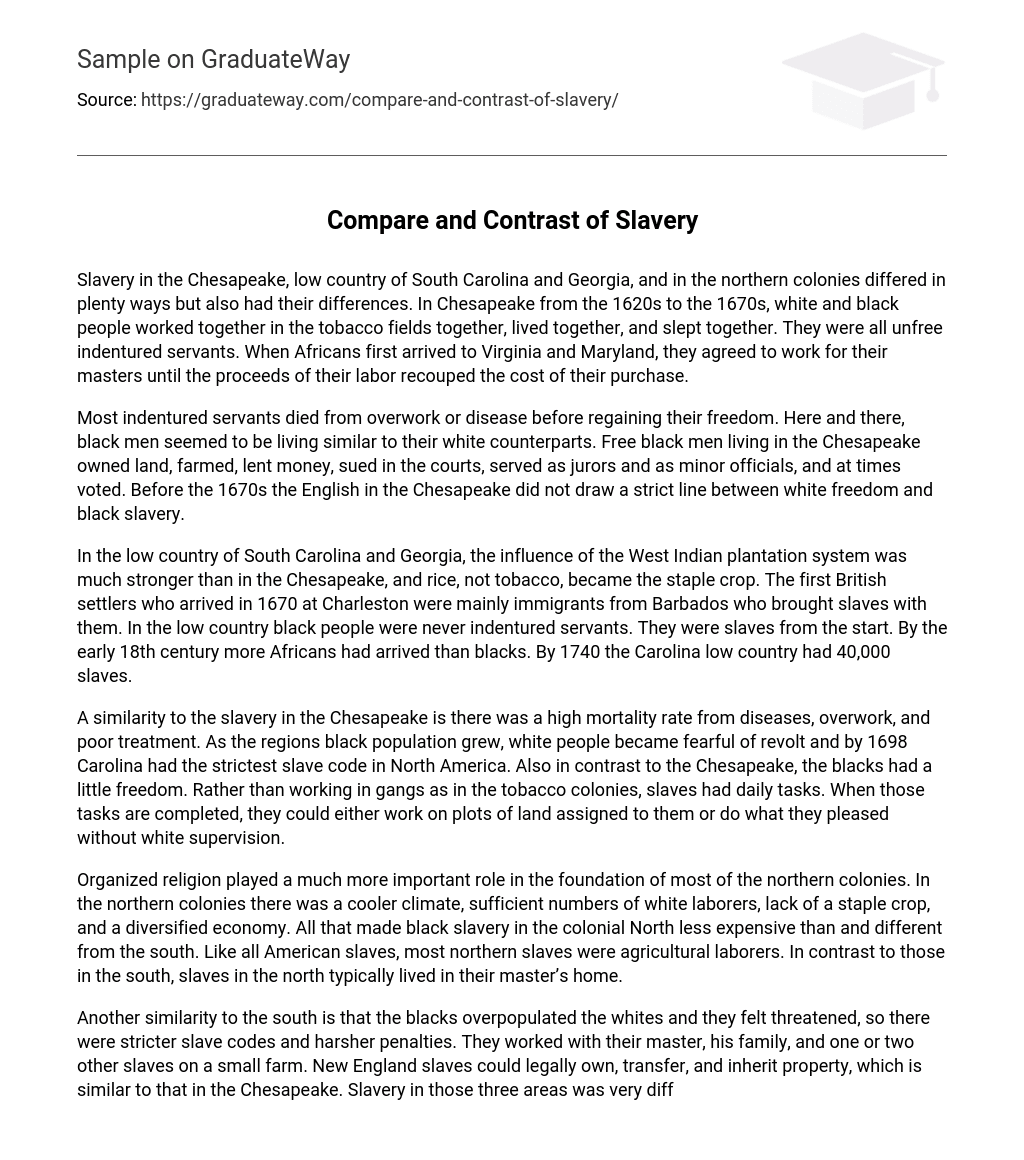Slavery in the Chesapeake, low country of South Carolina and Georgia, and in the northern colonies differed in plenty ways but also had their differences. In Chesapeake from the 1620s to the 1670s, white and black people worked together in the tobacco fields together, lived together, and slept together. They were all unfree indentured servants. When Africans first arrived to Virginia and Maryland, they agreed to work for their masters until the proceeds of their labor recouped the cost of their purchase.
Most indentured servants died from overwork or disease before regaining their freedom. Here and there, black men seemed to be living similar to their white counterparts. Free black men living in the Chesapeake owned land, farmed, lent money, sued in the courts, served as jurors and as minor officials, and at times voted. Before the 1670s the English in the Chesapeake did not draw a strict line between white freedom and black slavery.
In the low country of South Carolina and Georgia, the influence of the West Indian plantation system was much stronger than in the Chesapeake, and rice, not tobacco, became the staple crop. The first British settlers who arrived in 1670 at Charleston were mainly immigrants from Barbados who brought slaves with them. In the low country black people were never indentured servants. They were slaves from the start. By the early 18th century more Africans had arrived than blacks. By 1740 the Carolina low country had 40,000 slaves.
A similarity to the slavery in the Chesapeake is there was a high mortality rate from diseases, overwork, and poor treatment. As the regions black population grew, white people became fearful of revolt and by 1698 Carolina had the strictest slave code in North America. Also in contrast to the Chesapeake, the blacks had a little freedom. Rather than working in gangs as in the tobacco colonies, slaves had daily tasks. When those tasks are completed, they could either work on plots of land assigned to them or do what they pleased without white supervision.
Organized religion played a much more important role in the foundation of most of the northern colonies. In the northern colonies there was a cooler climate, sufficient numbers of white laborers, lack of a staple crop, and a diversified economy. All that made black slavery in the colonial North less expensive than and different from the south. Like all American slaves, most northern slaves were agricultural laborers. In contrast to those in the south, slaves in the north typically lived in their master’s home.
Another similarity to the south is that the blacks overpopulated the whites and they felt threatened, so there were stricter slave codes and harsher penalties. They worked with their master, his family, and one or two other slaves on a small farm. New England slaves could legally own, transfer, and inherit property, which is similar to that in the Chesapeake. Slavery in those three areas was very different but yet there were key similarities to each one of them. Comparing and contrasting the three made me realize how different things were in each area and how over time things changed.





